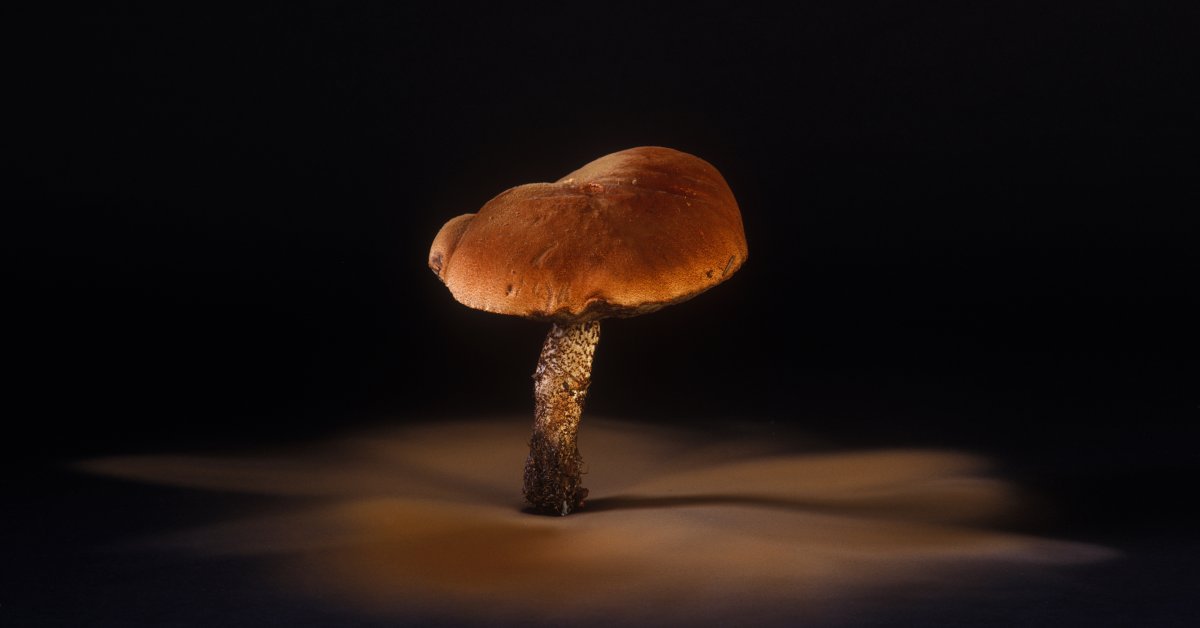BBy now, you’ve probably heard of “zombie mushrooms,” which are able to puppet the behavior of their insect hosts with magnificent precision. One of these mushrooms, Ophiocordyceps unilateralis, infects carpenter ants. Once infected with the fungus, the ants get rid of their instinctive fear of heights and climb to the nearest plant. In due course, the fungus forces the ant to clamp its jaws around the plant in a “death grip.” The fungus then digests the ant’s body and projects a rod-like structure out of its head, from which the spores spill out onto the ants passing below.
Unlike the fictional killer zombie mushrooms of HBO’s recent post-apocalyptic series, The last of us, zombie fungi have never been found to infect mammals. But it’s no surprise that they fire our imaginations: thinking about mushrooms makes the world different. Fungi are one of the kingdoms of life – a category as broad as “animals” or “plants” – and are essential to understanding the planet we live on. They are within you and around you. They support you and everything you depend on. As you read these words, fungi make soil, produce food, make medicine, feed and kill animals and plants, and influence the composition of Earth’s atmosphere.
The fungal fact is more remarkable than the fungal fiction. And as we look to the future of life on a damaged planet, what can we do to nurture generative relationships with this mind-blowing and wildly diverse group of organisms?
Learn more: How HBO’s The Last of Us attempts to capture the complex morality of video gaming
Most fungi live most of their lives not as mushrooms, but as branching, coalescing networks of tubular cells called mycelium. Mycelial networks have no fixed shape. By reshaping, they can navigate mazes and skillfully explore their surroundings. On a global scale, the total length of fungal mycelium in the top 10 centimeters of the ground is over 450,000 quadrillion kilometres: about half the width of our galaxy. Most plants depend on symbiotic fungi that weave through roots and leaves, providing plants with essential nutrients and defending them against disease and drought. Bacteria use fungal networks as highways to navigate the soil’s crowded rotting landscapes. Of the carbon found in soils – which is twice the amount of carbon found in plants and the atmosphere combined – a substantial proportion is bound to resistant organic compounds produced by fungi. Fungal networks comprise an ancient life support system that easily qualifies as one of the wonders of the living world.
The growing wave of interest in mushrooms is welcome and long overdue. But why now? What has led to the current rise in fascination with mushrooms? Exciting new research made possible by technologies such as DNA sequencing plays an important role; now more than ever, we are better equipped to unlock their secrets and understand their complexities. Exciting fungal discoveries have found a receptive audience in part thanks to a growing awareness of the interconnectedness of the living world. Mushrooms are powerful reminders of the intimate and reciprocal relationships that sustain all life. Additionally, mushrooms make good display organisms for networked thinking: The recent wave of public interest in mushrooms has coincided with the rise of network concepts in many disciplines, from computing, sociology and neuroscience to economics and astronomy.
But perhaps the most powerful driver of popular interest in mushrooms has been growing awareness of the many ways we can partner with mushrooms to adapt to worsening environmental and health crises. Mushrooms are metabolic wizards and their chemical achievements have long shaped human life: bread, cheese, soy sauce, penicillin, a host of powerful antiviral and anticancer compounds, cholesterol-lowering statins and immunosuppressive drugs that enable organ transplants, not to mention alcohol (fermented by a yeast) and psilocybin (the psychoactive component of psychedelic mushrooms that shows promise in treating severe depression and anxiety). Voracious fungal appetites can be deployed to break down pollutants such as crude oil from oil spills, in a process known as mycoremediation. In mycofabrication, construction materials and textiles can be grown from mycelium and used as replacements for plastics and leather.
Learn more: Are mushrooms healthy? Here’s what the experts say
While mushrooms are key allies for humans, it’s also true that a small minority can cause major problems. Fungal infections kill around 2 million people a year. Fungal plant diseases cause billions of dollars in losses – the rice borer fungus destroys enough rice to feed more than 60 million people each year. Fungal tree diseases, from Dutch elm disease to chestnut blight, are transforming forests and landscapes. The impact of fungal diseases is increasing across the world due to trade and unsustainable agricultural practices, and the widespread use of antifungal chemicals has led to an unprecedented increase in new fungal superbugs that threaten both human health and plant health.
Since we have no choice but to interact with fungi, how could we ensure a healthy future with them?
First, mushrooms should be included in conservation frameworks. Fungi play a vital role in maintaining planetary biodiversity. When we disrupt them, we compromise the health and resilience of the organisms on which we all depend. Despite the fact that we are destroying the planet’s fungal communities at an alarming rate, most environmental legislation and international assemblies such as the Convention on International Trade in Endangered Species of Wild Fauna and Flora (CITES) or the United Nations Convention on Biological Diversity (CBD), as well as many major international NGOs, refer to the conservation of Flora (plants) and Wildlife (animals). Addition to the third “F”, Mushroom, to list would bring this neglected kingdom of life into agricultural and conservation policy frameworks, and unlock crucial funding for mycological research, surveys and educational programs.
We also need to invest in mushroom research. Mushrooms are a realm of life that has not been given the attention of a realm, and our ignorance is easily summed up. Current estimates suggest that less than 10% of all fungal species have been described. It was not until 1969 that fungi were recognized as their own distinct kingdom of life, which entrenched a disciplinary bias: there are fewer opportunities for research on fungi than on animals and plants. Even though fungal pathogens are on the increase, no vaccine has been developed against fungal infections, and the few existing antifungal drugs are becoming increasingly ineffective. A better understanding of fungal life will support vital conservation and restoration projects, and will also spur much-needed innovation in fungal technologies.
Above all, we must invest in fungal education. Fungi are largely absent from school and undergraduate curricula, perpetuating our fungal blindness and actively distorting our worldview. Stories of the living world that don’t include mushrooms are stories of a world that doesn’t exist.
Mushrooms have long supported and enriched life on Earth. We are unthinkable without them, and yet we are only just beginning to understand the intricacies of mushroom life. It’s time to give them the attention they deserve.
More must-reads from TIME
gb7
Don’t miss interesting posts on Famousbio










